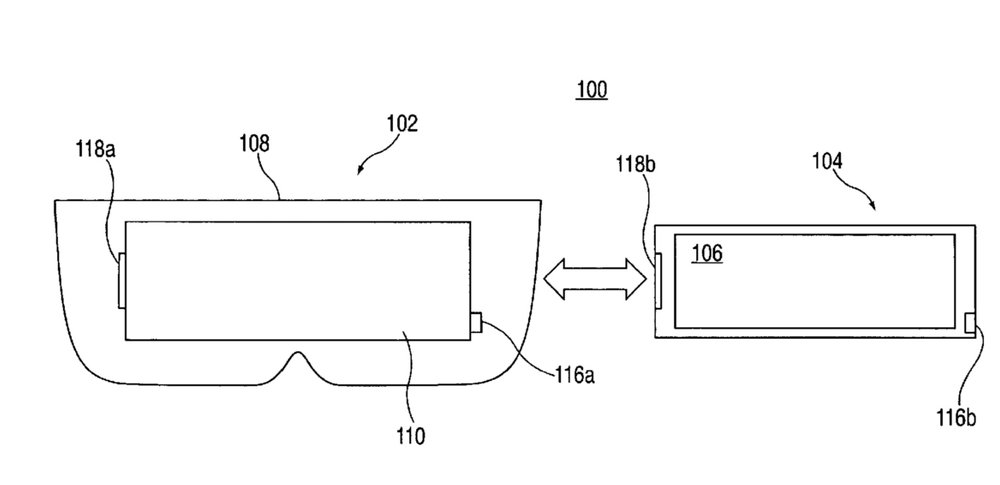Apple has been granted two new patents that show the company is at least considering head-mounted displays for augmented reality (AR). Patents 9,646,574 and are for a “head-mounted display apparatus for retaining a portable electronic device with display.”
Both patents involve head-mounted display systems and methods of operation that allow users to couple and decouple a portable electronic device — most likely an iPhone or iPad, though connectivity with Macs would be cool. The portable electronic may be physically coupled to the head-mounted device such that the portable electronic device can be worn on the user’s head. Such a configuration would allow the user, among other things, view media on a private display, while the media is provided by a personal handheld device.

The portable electronic device may be operatively coupled to the head-mounted device such that the portable electronic device and head mounted device can communicate and operate with one another. Each device may be allowed to extend its features and/or services to the other device for the purpose of enhancing, increasing and/or eliminating redundant functions between the head-mounted device and the portable electronic device.
Apple is more interested in AR than virtual reality (VR), because the former connects people whereas the latter is often an isolating experience involving a headset that renders the user blind to the real world.
Apple has applied for multiple patents regarding AR and scooped up some AR-related companies. In 2015, the tech giant purchased Metaio, a company makes Metaio Creator, an AR authoring tool. Metaio says it allows for quick and easy creation and deployment of AR scenarios that are based on the latest tracking technologies.
In 2013, Apple bought PrimeSense, an Israeli maker of chips that enable three-dimensional (3D) machine vision. The chip’s 3D sensors are designed to enable nature interaction between people and devices and between devices and their surroundings. Its machine vision products map out 3D environments and track movements of bodies, faces and facial expressions.
Of course, Apple files for — and is granted — lots of patents by the U.S. Patent & Trademark Office. Many are for inventions that never see the light of day. However, you never can tell which ones will materialize in a real product.
